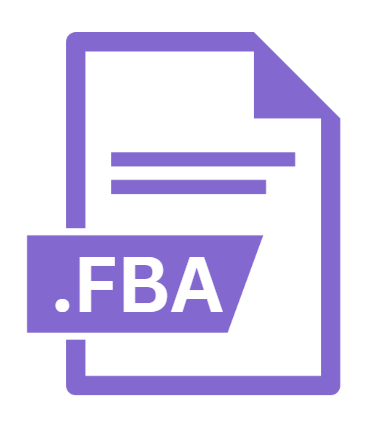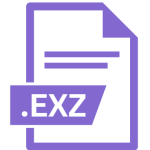.FBA File Extension

Fitbit OS App Package
| Developer | Fitbit |
| Popularity | |
| Category | Executable Files |
| Format | .FBA |
| Cross Platform | Update Soon |
What is an FBA file?
The .FBA file extension is associated with Fitbit OS, specifically used for packaging applications designed for Fitbit smartwatches.
Fitbit, a popular brand in wearable technology, offers a range of devices that track health and fitness metrics. To extend the functionality of these devices, developers create apps that can be installed on Fitbit smartwatches.
The .FBA file is the package format used to distribute these apps, containing all the necessary components such as code, assets, and metadata.
More Information.
The .FBA file format was introduced when Fitbit released its first smartwatch, the Fitbit Ionic, in 2017. This smartwatch marked a significant shift for Fitbit, moving beyond simple fitness trackers to a more comprehensive wearable device that could run third-party applications.
The .FBA file was designed to encapsulate all the components needed for an app to run on Fitbit OS, similar to how APK files work for Android devices.
The initial purpose of the .FBA format was to provide a standardized way to package and distribute apps, ensuring that they could be easily installed and managed on Fitbit smartwatches.
Origin Of This File.
The .FBA file extension originated as part of Fitbit’s ecosystem when the company introduced the Fitbit OS, the operating system designed specifically for its line of smartwatches.
Fitbit, founded in 2007, initially focused on fitness trackers. However, as the wearable technology market evolved, Fitbit expanded its product line to include smartwatches, which required a more sophisticated operating system.
The .FBA file format was developed to facilitate the distribution and installation of apps on Fitbit devices, allowing developers to create a wide range of applications to enhance the user experience.
File Structure Technical Specification.
The .FBA file is essentially a compressed package that includes several key components necessary for the app to function on a Fitbit device. The structure of an .FBA file typically includes the following elements:
- Manifest File: This file contains metadata about the app, including its name, version, permissions required, and the target Fitbit OS version. It serves as a blueprint for how the app should be installed and executed.
- Application Code: The core logic of the app, usually written in JavaScript, is included in the .FBA file. This code defines the app’s functionality and how it interacts with the Fitbit OS and the device’s hardware.
- Resources and Assets: This section contains the visual and audio elements of the app, such as images, icons, fonts, and sound files. These assets are used by the application to create its user interface and overall experience.
- Companion App: Some .FBA files may include a companion app, which is a separate application that runs on the user’s smartphone and communicates with the Fitbit app. This allows for more complex interactions and functionalities, such as syncing data between the smartwatch and the phone.
- Security Signatures: To ensure the integrity and security of the app, .FBA files are often signed with a digital signature. This helps prevent tampering and ensures that the app is from a trusted source.
The .FBA file is designed to be lightweight, ensuring that apps can run smoothly on Fitbit devices, which have limited processing power and storage compared to smartphones.
How to Convert the File?
Converting .FBA files to other formats is not a common practice because these files are specifically designed for Fitbit OS.
If a developer wants to port their Fitbit app to another platform, they would need to extract the application’s code and assets from the .FBA file and then repackage them according to the target platform’s requirements.
For instance, if a developer wanted to convert a Fitbit app to an Android app, they would need to rewrite the application code to be compatible with Android’s APIs and repackage the app as an APK file.
The assets and resources could likely be reused, but the overall structure of the app would need to be adapted for the new platform.
Advantages And Disadvantages.
Advantages:
- Compact and Efficient: The .FBA file format is optimized for the limited resources of Fitbit devices, ensuring that apps run smoothly without consuming excessive memory or processing power.
- Security: The inclusion of digital signatures in .FBA files helps maintain the security of the app ecosystem, protecting users from malicious software.
- Standardization: By using a standardized file format, Fitbit ensures compatibility across its devices, making it easier for developers to create apps that work on multiple Fitbit models.
- Integration with Fitbit OS: The .FBA format is specifically designed to work seamlessly with Fitbit OS, allowing for deep integration with the device’s hardware and software features.
Disadvantages:
- Limited Flexibility: The .FBA file format is tailored for Fitbit OS, which limits its use to Fitbit devices only. Developers cannot use this format for other platforms.
- Resource Constraints: Fitbit devices have limited processing power and memory, which restricts the complexity and size of apps that can be packaged as .FBA files.
- Closed Ecosystem: Fitbit’s app ecosystem is relatively closed, with strict guidelines for app development and distribution. This can be a barrier for some developers who are used to more open platforms.
How to Open FBA?
Open In Windows
- To open and explore the contents of a
.FBAfile on a Windows computer, you can use a file archiving tool like WinRAR or 7-Zip. These tools allow you to extract the contents of the.FBAfile, including the app’s code and resources, for inspection or modification.
Open In Linux
- Linux users can use file archivers like
unziporp7zipto open and extract the contents of a.FBAfile.
Open In MAC
- On macOS, you can use a similar approach to Windows by utilizing tools like The Unarchiver or Keka to extract the contents of the
.FBAfile.













